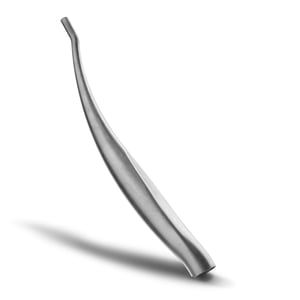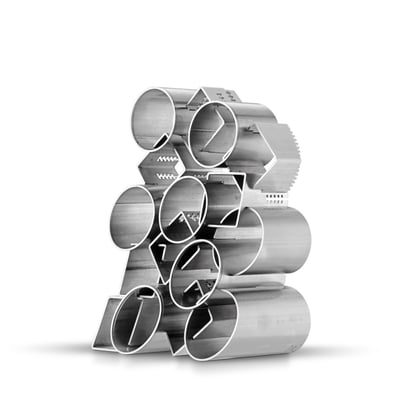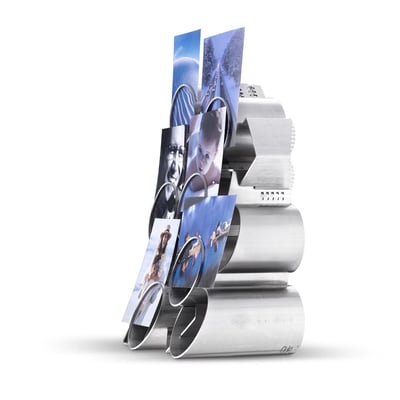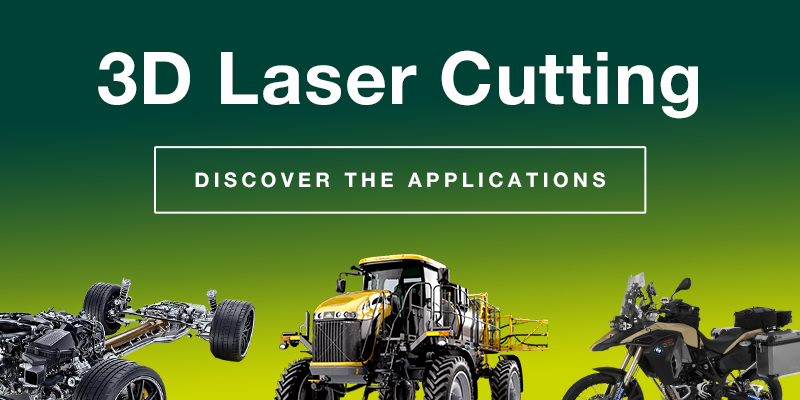Within a manufacturing company, machines are an integral part of people’s daily lives. The following overview can help guide you through a much more complex universe than you can imagine.
The machines:
- They determine the types of products that can be made and those that cannot
- They track attendance and time
- They have a decisive impact on the relationship between various departments
- They impose many of the micro- and macro-choices that need to be taken into account in your day-to-day work activities.
Comparing design requirements and metal cutting technologies
Many successful products are recognized by a distinguishing feature. Functionality and strength being equal, design and finish play an important role in many industries.
Aesthetic qualities are important factors in product design. Consider the furniture, automotive, and motorcycle industries: the products are not only functional, but aesthetically pleasing. Customers appreciate the attention to detail and the quality of the finished product.
 |
 |
|
Example of a lamp made for an Italian design brand
|
|
 |
|
| Example of a lamp made for an Italian design brand | |
Details allow brands to stand out from the competition. Above all, it is the selection of the right processing technology for the raw material these details into fruition.
In practice, the design concept often fails because it cannot be produced due to limited production capabilities. As a result, it can create conflict between product designers and production staff. Transforming ideas into actual products can require an extensive amount of effort for a variety of reasons:
- The required process may not be feasible with the machines that a company has.
- Machine settings could be very complex, requiring skills that operators do not possess.
- Manual operations may be necessary, which may affect the accuracy of the machining process
- It may be necessary to split the process across multiple machines, increasing the time and associated cost per part.
Under these conditions, the design is often simplified, so the part can be produced utilizing the equipment available.
This not only impacts the business’ productivity and growth potential but can also cause severe pitfalls between design engineering and manufacturing. When people in these two critical departments aren’t on the same page, the result is always a total manufacturing cost that is higher than it should be. At best, workers in each area do not completely respect those in the other department. This leads to ill feelings all around and can easily escalate into something much worse.
As a business leader, it would be easy to make an isolated equipment purchase to satisfy the needs of both departments. However, we all know that it’s not that straightforward. It’s important to complete the due diligence. There are many factors which you need to consider before making a practical and reasonable purchase.
Let's look at the biggest challenges employees face when new machinery is introduced.
How to respond to production needs by creating business opportunities
When you decide to buy a new metal cutting system, the primary focus is on production and growth:
- Taking on new cutting project opportunities from a different industry sector
- Increasing productivity and improving cycle times
- Maximum flexibility for processing complex parts
Satisfying production does not mean abandoning the business perspective. The needs of the production manager and those of the business leader are generally the same.
 |
 |
| Example of a designer photo frame made entirely of metal | |
The production manager’s focus is meeting or exceeding customer needs and staying ahead of the competition. A perspective that coincides with that of the business leader, for whom technological innovation and processes represent a fundamental lever for maintaining or gaining competitiveness in the market, achieving business objectives and guaranteeing the future of the company.
New production systems = New company dynamics
The introduction of a new production system always fuels exciting change within a company, generating a more engaging and challenging work experience that benefits the employees and compan:
- New technologies bring new learning experiences
- Replacing multiple machining operations into one process
- Repetitive work is reduced allowing employees time for more higher-value tasks such as problem-solving, finding new solution and developing new ideas.
It sets in motion a chain of company dynamics that are not all predictable, sometimes unknown to the owner or production manager.
In order to successfully roll-out the new machine purchase, it’s important to involve all stakeholders in the process as early as possible. Their work is often significantly influenced by the introduction of the new system.
The goal: Be transparent in every aspect of the process to generate acceptance and excitement for employees to be part of an innovative company that invests in technology and development.
It is important to involve the different company roles in the decision-making process
In the metal-cutting sector, purchasing a new machine is an event that normally has a significant impact on many departments.
Certainly there is a person (or team) that manages the machine-buying process and makes the final recommendation to management for approval.
However, before making a final decision, it’s important to receive input from the various departments impacted. You gain valuable insight on what requirements are important and any concerns prior to the machine selection.
The goals of the team are typically to:
- Supportar production needs in the best possible way
- Select a technology that allows the company to diversify the business by making distinctive products
- Streamline operations within the company
- Define a medium-to-long term business goals and also consider the future needs of your customers
- Give your production maximum flexibility with 3D laser cutting.
Implementing 3D cutting with a view to the future
|
|
| Examples of 3D laser cuts |
There are many ways to cut bent tubes, stamped parts, deep-drawn, hydroformed parts and any three-dimensional profile in general but it is good idea to pay particular attention to several details when determining the most suitable cutting technology for your objectives:
- Complexity of the geometries to be created: Although some geometries or parts may seem feasible to process today, you should keep in mind that in the future the complexity of what you have to do may increase and this may mean that you have to invest in a new machine. Do not preclude the possibility of your production. Always look for systems that can process as many parts as possible.
An example
You are very good at watrer-jet cutting stamped sheets, but what happens if your customers ask you to cut bent tubes?
- Diversity of materials: It's commond that the market requires a change to the material used to make certain products, so it's good to consider that in the future the material you are cutting may not be the same. Therefore, a technology that can only cut certain materials may not be the best solution.
An example
You are very good at cutting stamped steel sections with a C=2 laser, but what happens if your customers ask you to make parts of stainless steel, copper alloy or aluminium?
- Cutting profile precision: in many cases, special conditions are also required on the cutting edge, for example a thin cut, a cutting edge as vertical as possible and the absence of thermal alterations of the material. In this case, having a technology that can guarantee such characteristics could prove to be a successful choice.
An example
You are using 3D plasma cutting to make three-dimensional parts. What would happen if customers were to ask you to increase productivity and ensure a cutting edge with no thermal alterations and a vertical section? Or what if they need thinners cut to make more parts from the same hydroformed part?



